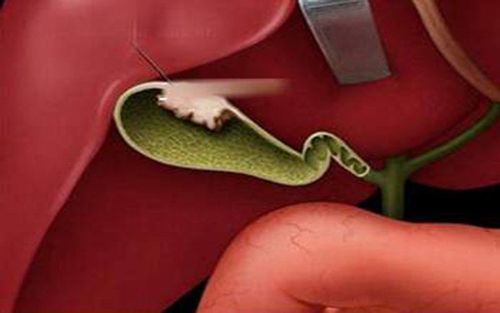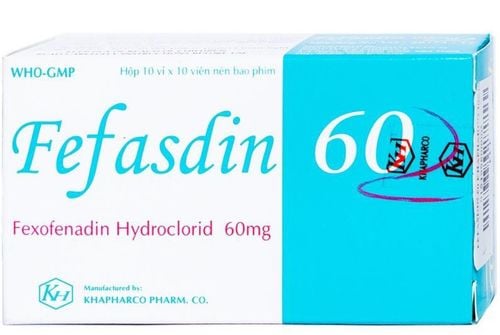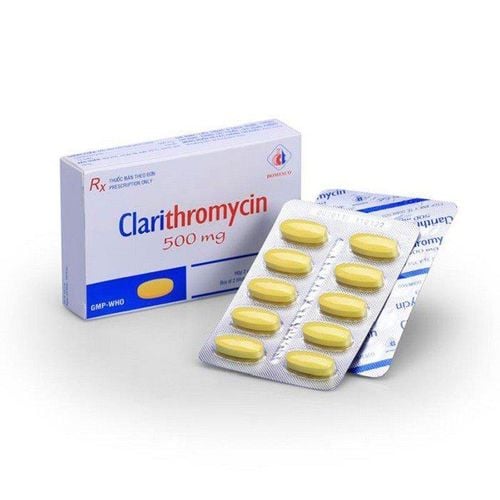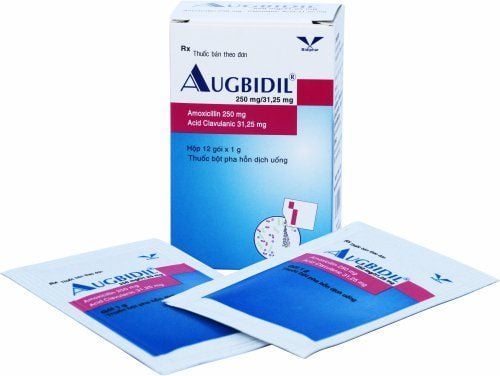This is an automatically translated article.
Cefdivale Injection is a prescription drug originating from Korea. With the main ingredient containing Cefazolin, it is used to treat infections caused by susceptible bacteria. However, because the pharmacokinetics of the drug is relatively strong, the patient needs to take the drug exactly as prescribed and not arbitrarily combine it with other drugs when there are no indications.
1. What is Cefdivale Injection?
Cefdivale Injection with the main ingredient is Cefazolin - this active ingredient belongs to the 1st generation cephalosporin group of antibiotics. The mechanism of action of this active ingredient is to inhibit the growth and division of bacterial cells by inhibiting the growth and division of bacterial cells. transpeptidase synthesis in the cell wall.
Cefazolin has strong effect on diseases caused by gram-positive bacteria such as Staphylococcus aureus, Staphylococcus epidermidis, Streptococcus pyogenes and other Streptococcus strains. However, cephalosporin antibiotics are generally not effective against gram-negative bacteria.
2. Uses of Cefdivale Injection
Cefdivale Injection is researched and prepared to treat infections caused by sensitive bacteria and viruses including:
Respiratory tract infections. Skin and soft tissue infections. Musculoskeletal infections. Bacterial endocarditis and blood infection. Infections of the bile ducts and bile ducts. Genitourinary and urinary tract infections. Prophylaxis of postoperative infections: The drug has the ability to reduce the rate of postoperative infection in cases with high risk of infection. Cefdivale Injection is not recommended for use in one of the following cases:
Patients who are sensitive to Cefazolin ingredients in the drug formula. The patient is allergic to cephalosporins and local anesthetics. Premature infants less than 1 month old.
3. Usage and dosage
3.1. How to use Cefdivale Injection is prepared as a powder for solution and administered by injection directly under the muscle or intravenously.
When injecting, inject slowly into a vein or muscle for 3-5 minutes. Before injection, it is necessary to dilute the 1g vial with 2.5ml of distilled water, then shake vigorously to dissolve the drug. With this solution, if stored at a temperature of 2 - 8 degrees Celsius, it can be used within 7 days. If used by intravenous infusion, the amount of drug mixed above can be mixed with 50-100ml of solvent for infusion. Solvents that can be mixed are: Distilled water for injection. Sodium chloride injection 0.9% saline. Dextrose solution for injection 5% or 10%. 5% Dextrose Solution in Sodium Lactate Injection. Dextrose solution for injection 5% with added Sodium Chloride injection 0.9% or 0.45% or 0.2%. Note, the solution after being diluted must be used immediately.
3.2 Dosage Usually the dose will be based on the weight and ability to respond to the drug in each person. Here is the recommended dose for patients to refer to:
Adults: 0.5 - 1g / time / 6 - 8 hours. Not more than 6 g/day. In severe, life-threatening infections, the dose can be increased to a maximum of 12 g/day. Newborns under 1 month old: 20 mg/kg body weight/time every 8 to 12 hours. Preterm infants less than 1 month of age are not recommended because there are no studies. Children over 1 month old: 25-50 mg/kg body weight/day, divided equally into 3-4 times. If the infection is severe, it can be increased to a maximum of 100 mg/kg body weight/day, divided equally into 4 times. Support for treatment of infection prevention in surgery Before surgery from 30 minutes - 1 hour, 1g injection. Prolonged surgery inject 0.5 - 1g more during surgery. Post-operatively, 0.5-1g/time/time/6-8h for 24h or continuous injection for 5 days in case of open heart surgery and transplant. For patients with renal impairment: Reduce dose on a case-by-case basis: Creatinine clearance > 55 mI/min, using the usual dose. Creatinine clearance 35-54 ml/min, administered at the usual dose and at least 8 hours apart from the next dose. Creatinine clearance 11-34 ml/min, halved from the usual dose and 12 hours after the next dose. Creatinine clearance < 10 ml/min, halved from the usual dose and 18-24 hours after the next dose.
4. Side effects
Side effects are undesirable and unavoidable when taking modern medicines. Here are some possible side effects according to the manufacturer's recommendations:
Allergies Toxic epidermal necrolysis, generalized pustular rash. Anaphylaxis . Immune hemolytic anemia with high doses. Inhibits blood clotting, increases the risk of bleeding, reduces platelets. Renal failure, liver and stomach dysfunction. Convulsions . When patients suspect side effects, stop using the drug and immediately contact the treating doctor for instructions on handling.
5. Drug interactions
Like other cephalosporin antibiotics, if Cefdivale Injection and the following drugs are used concurrently, there will be undesirable reactions that are:
Probenecid: Concomitant use will reduce the elimination of Cephalosporin. through the renal tubules and causes cephalosporin blood levels to increase and persist. Colistin: Increased risk of kidney damage. Therefore, to ensure safety for health and effective treatment, patients need to inform the doctor about the name of the drug and functional food being used to be guided on the most appropriate use.
6. Note the use of drugs
The notes that the patient cannot ignore before taking the drug are:
Carefully investigate the history of allergy to antibiotics or anesthetics. Take the right dose at the right time as prescribed. Carefully check the condition of the drug before taking it. For pregnant women, there are no specific studies on the possibility of causing birth defects, but it is best to use the drug only when needed and with supervision from a specialist doctor. The ability to eliminate drugs through breast milk is quite low, so nursing mothers can still use it, but it is necessary to carefully monitor the health of the baby. During injection or infusion should be administered and monitored by medical personnel.
7. Management of forgetting or overdose
Overdose: In case the patient shows signs of convulsions, stop using the drug immediately, perform first aid with anticonvulsant drugs if indicated, and at the same time carry out respiratory protection. gas and infusion of detoxification. In special cases, it can be combined with dialysis and blood transfusion. Missed dose: Take as soon as you remember, but pay attention to the time between the missed dose and the next dose, if it's too close, skip the missed dose and take the next dose as scheduled. Do not arbitrarily supplement the dose.
Please dial HOTLINE for more information or register for an appointment HERE. Download MyVinmec app to make appointments faster and to manage your bookings easily.













